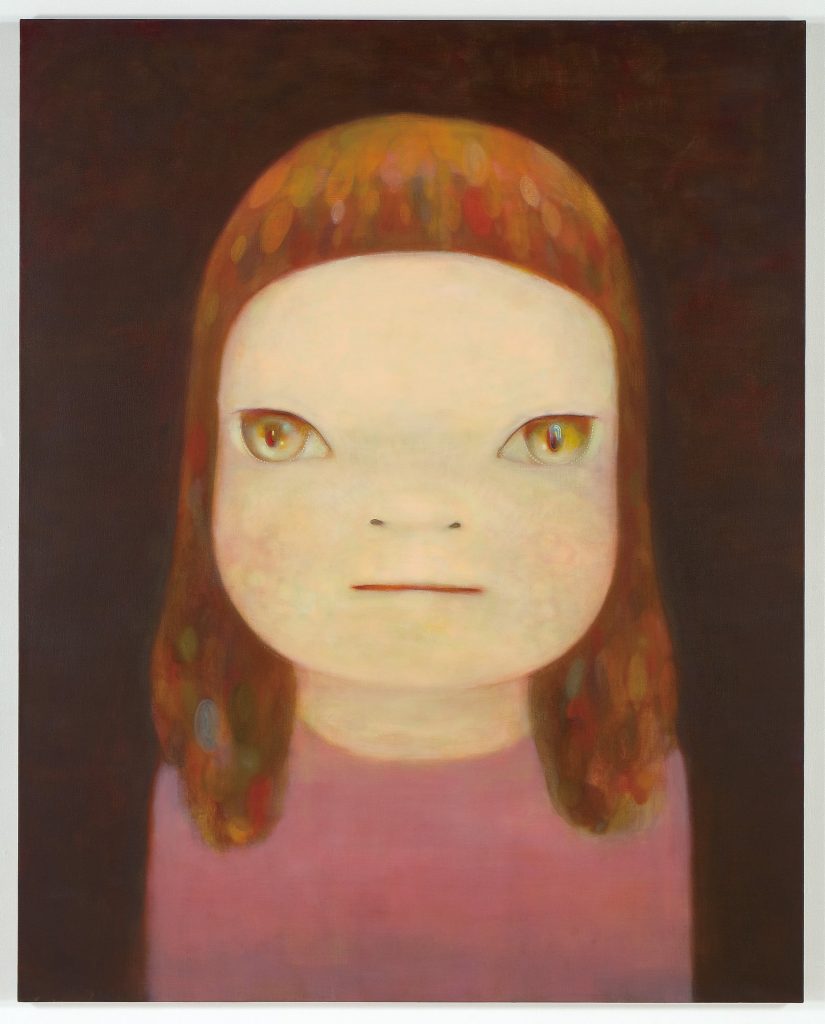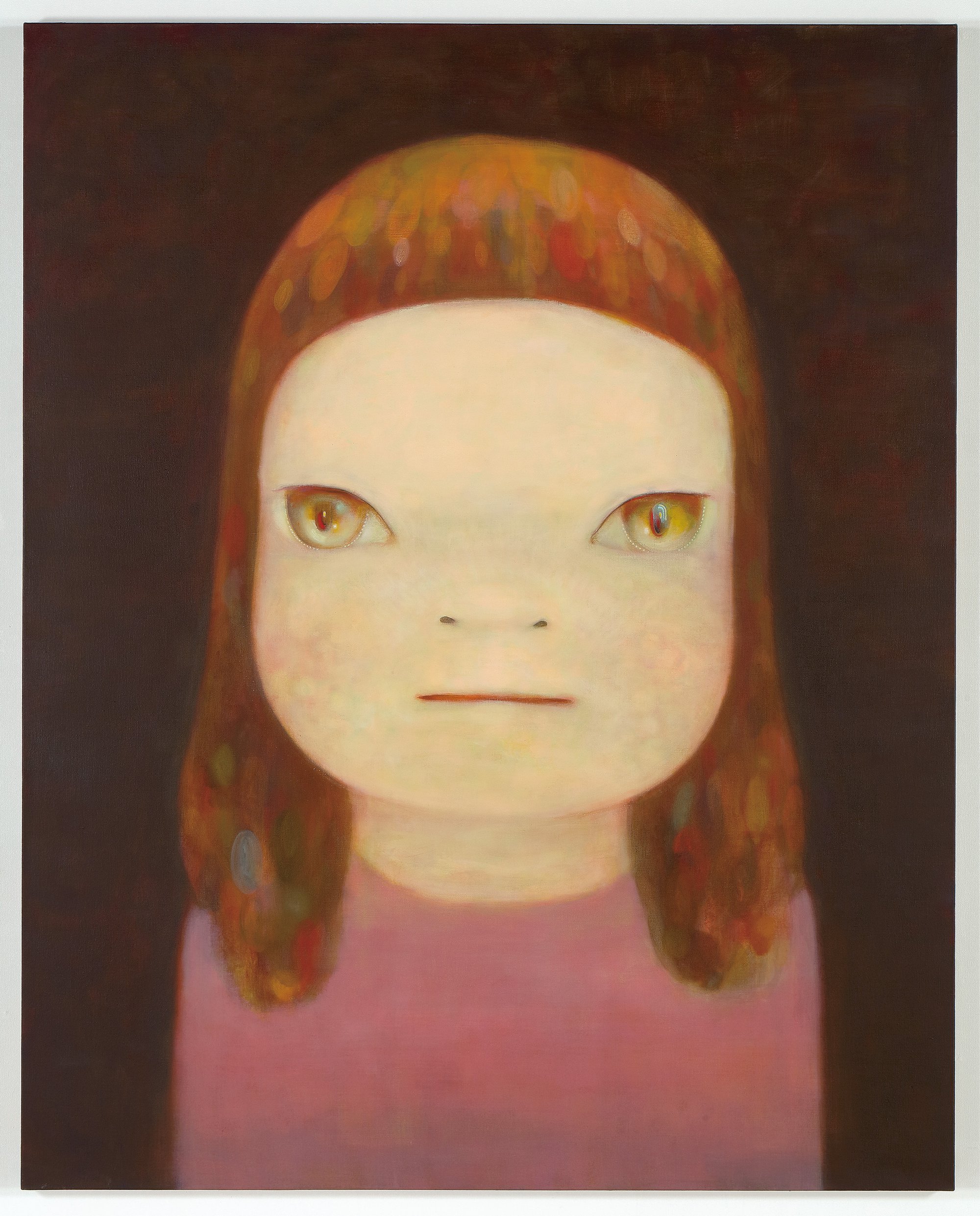
“Yoshitomo Nara: Exploring Themes of Unease in His Artistic Vision of Home”

**Exhibition Spotlight: Yoshitomo Nara at Guggenheim Museum Bilbao**
**BILBAO, Spain** — The Guggenheim Museum Bilbao is currently hosting a captivating exhibition of Yoshitomo Nara’s work that plunges deep into the emotional and psychological nuances of displacement, rebellion, and childhood malaise. Known for his poignant, sometimes haunting depictions of young girls and quasi-animalistic characters, Nara’s work strikes a balance between innocence and darker, often violent, psychological undertones. The survey, which covers Nara’s illustrious career, is organized thematically rather than chronologically, giving visitors a unique lens through which to view his artistic evolution.
### **From Nostalgia to Angst: “My Drawing Room” (2008)**
The exhibition opens with Nara’s installation **“My Drawing Room 2008, Bedroom Included”** (2008), a hut-like structure filled with personal memorabilia, toys, and mementos—a physical manifestation of home and childhood. However, the piece is not as simple as it appears on the surface. The exterior is decorated with a small girl and the phrase “PLACE LIKE HOME,” evoking a deep sense of homesickness. This was a recurring feeling for Nara, who created the work while studying art in Düsseldorf during the 1990s, a time marked by cultural and linguistic displacement.
Nara’s idea of “home” exists in a liminal web of anxieties and fantasies, central to his work’s thematic development. The sense of displacement he experienced abroad, compounded by the struggle of not speaking the local language initially, echoes the broader theme of adolescent angst and rebellion that runs through his oeuvre.
### **A Journey from Sarcasm to Malice**
As the exhibition progresses, Nara takes the audience from the biting humor of his early drawings—such as one depicting an elongated boot crushing a flower—toward more disturbing scenes. His infamous painting, **“Dead Flower 2020 Remastered”** (2020), depicts a child holding a saw, her back turned but with a bloodied grin on her face. The mixture of violence, absurdity, and childlike innocence creates an unsettling tension left unresolved, a stark example of Nara’s ability to juxtapose disturbing themes with seemingly benign scenarios.
This juxtaposition establishes Nara’s unique storytelling within contemporary art — his work confronts viewers with both humanity and its carnal impulses, indulging in what he calls the “psychosomatic space” of adolescence. His iconic characters, with their wide cartoonish eyes, are at once relatable and nightmarish.
### **A Global Reflection of Disillusionment**
Nara’s artistic journey cannot be separated from the backdrop of 1980s Japan, during the nation’s transformative post-war “economic miracle.” Growing up in this high-pressure environment, Nara’s parents worked long hours, leaving the young artist often isolated, an experience that deeply influences his work. Nara conjures comparisons to American artists like **Mike Kelley** and **Paul McCarthy**, whose disfigured or infantilized characters evoke a similar fusion of humor, discomfort, and trauma.
Both Kelley and Nara ground their work in social critique. For Nara, the early success of Japan’s economy—followed by stagnation, a national identity crisis, and the lingering shadow of the atomic bomb—offers a parallel to Kelley’s critique of American consumerism and the unraveling of the American Dream. The **Fukushima disaster of 2011** added a new dimension to Nara’s themes of anxiety, reinforcing his concern with nuclear destruction and environmental devastation.
### **A Political Transformation: From Rebellion to Introspection**
As Nara’s own work evolved into the 21st century, it shifted from the overt rebelliousness of his early years toward a more introspective and vulnerable tone. The delinquent energy of earlier pieces where his childlike protagonists smoked, cursed, or committed petty violence gave way to figures in moments of reflection or injury. These later paintings are less animated by defiance and more by exhaustion or despair.
In **“Urgence”** (2013), a child lies on a hospital gurney, gazing accusingly at the viewer, her wide eyes now filled with fear instead of malice. Similarly, in **“After the Acid Rain”** (2006), the familiar Nara girl is slumped forward in defeat, her exaggerated features emphasizing her fragility rather than her former rebellious strength.
### **Nara’s Evolving Visual Aesthetic**
While Nara’s themes have grown in emotional complexity, his aesthetic style has remained relatively consistent. He favors acrylics with precise, clean edges, and simplified silhouettes. Recently, however, Nara has embraced new materials, such as reinforced fiber plastic (RFP), which adds textural depth to his works while maintaining the bright, almost violent color palette that defines his earlier career.
Yet his political concerns